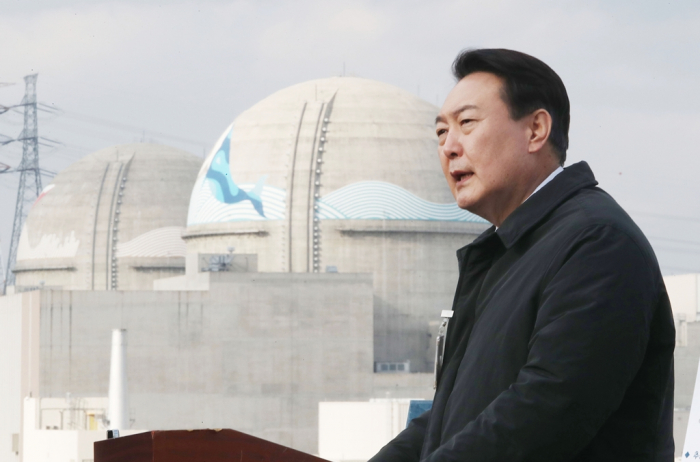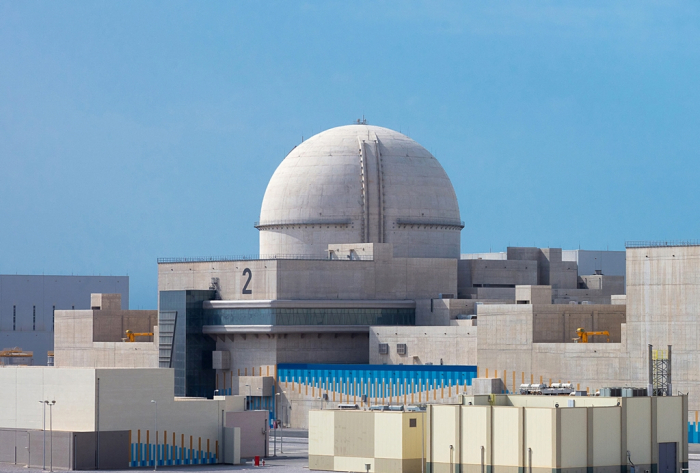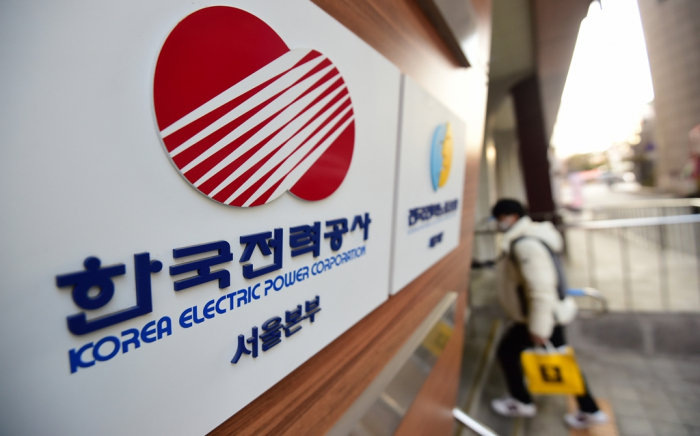Business & Politics
Korea’s Yoon govt to raise nuclear power to 34% of energy source
The new government also plans to extend the service life of eight more aging nuclear plants
By Apr 21, 2022 (Gmt+09:00)
3
Min read
Most Read
LG Chem to sell water filter business to Glenwood PE for $692 million


Kyobo Life poised to buy Japan’s SBI Group-owned savings bank


KT&G eyes overseas M&A after rejecting activist fund's offer


StockX in merger talks with Naver’s online reseller Kream


Mirae Asset to be named Korea Post’s core real estate fund operator



South Korea’s incoming government plans to extend the service life of eight more nuclear power plants than originally planned as President-elect Yoon Suk-yeol vows to source a third of the country’s energy generation from nuclear power.
According to the presidential transition committee on Wednesday, the new government plans to allow nuclear power plant operators to seek government permission for the continued operation of aging generators up to 10 years ahead of the scheduled permanent shutdown.
Currently, state-run nuclear power companies can submit such requests to the government two to five years before the pre-planned closures.
“We have discussed this matter with the Nuclear Safety and Security Commission and if regulations are revised, as many as 18 nuclear power generators will continue to be operational. That’s eight more than originally planned under the outgoing government,” said a transition team official.
As a result, nuclear power will account for 33.8% of Korea’s energy generation, up from 27.4% in 2021.
He said the transition team will also resume construction of the Shinhanul 3 and 4 nuclear power plants at the earliest possible date, as promised during his presidential campaign.
The outgoing Moon Jae-in administration halted construction on the two powerhouses in Uljin, North Gyeongsang Province, as part of his energy policy to minimize Korea’s reliance on atomic power.

ENERGY PLAN REVISION TO COME EARLIER
The new government plans to revise the country’s five-year energy supply plan earlier than scheduled to reflect President-elect Yoon’s new energy strategy focused on nuclear power.
The transition team said the new government will move up the revision of the five-year plan, originally scheduled for 2024, to establish the 4th Energy Basic Plan this year.
Once the plan is out, the government will also revise its biennial electricity supply and demand scheme by the end of this year to reflect the expected increase in nuclear power generation.
Under the country’s latest five-year energy plan set in 2019, South Korea plans to expand renewables to 30-35% of energy sources and drastically cut nuclear and coal-fired electricity by 2040.
Korea’s state-run power utility Korea Electric Power Corp. (KEPCO) reported its largest-ever operating loss of nearly 6 trillion won ($5 billion) in 2021, after it froze the electricity rate for almost eight years.
Despite the price spike of crude oil, coal and natural gas, KEPCO had kept its electricity prices unchanged since it last hiked them in late 2013 in accordance with President Moon’s nuclear phase-out policy, which made the company avoid using much cheaper nuclear power.

POLICY U-TURN
Yoon, who takes office on May 10, has indicated an intention to rescind the current government policy of phasing out nuclear energy and intends to promote the development of small modular reactors, citing Korea’s increased reliance on fossil fuels.
President Moon’s nuclear-free policy came with enhanced public awareness of the dangers of nuclear accidents following the Fukushima nuclear disaster in Japan in 2011.
A state investigation in 2014 also revealed that utility provider Korea Hydro & Nuclear Power had used counterfeit parts, forged safety documents, and bribed government officials to get nuclear contracts and build reactors at competitive rates in Korea and abroad.
A 2016 earthquake in Gyeongju, a city with many nuclear reactors, has also called safety standards into question.
However, things have changed as governments around the world are increasingly adopting nuclear power amid soaring energy prices.
The US has allowed 85 old nuclear generators out of a total of 93 currently in operation to continue their services, according to industry data.
Write to Zi-Hoon Lee at lizi@hankyung.com
In-Soo Nam edited this article.
More to Read
-

-

-
 Hyundai E&C, Holtec sign nuclear power plant decommissioning deal
Hyundai E&C, Holtec sign nuclear power plant decommissioning dealMar 31, 2022 (Gmt+09:00)
2 Min read -
 War in UkraineKorea jittery over oil, gas, commodity weaponization
War in UkraineKorea jittery over oil, gas, commodity weaponizationMar 13, 2022 (Gmt+09:00)
4 Min read
Comment 0
LOG IN


